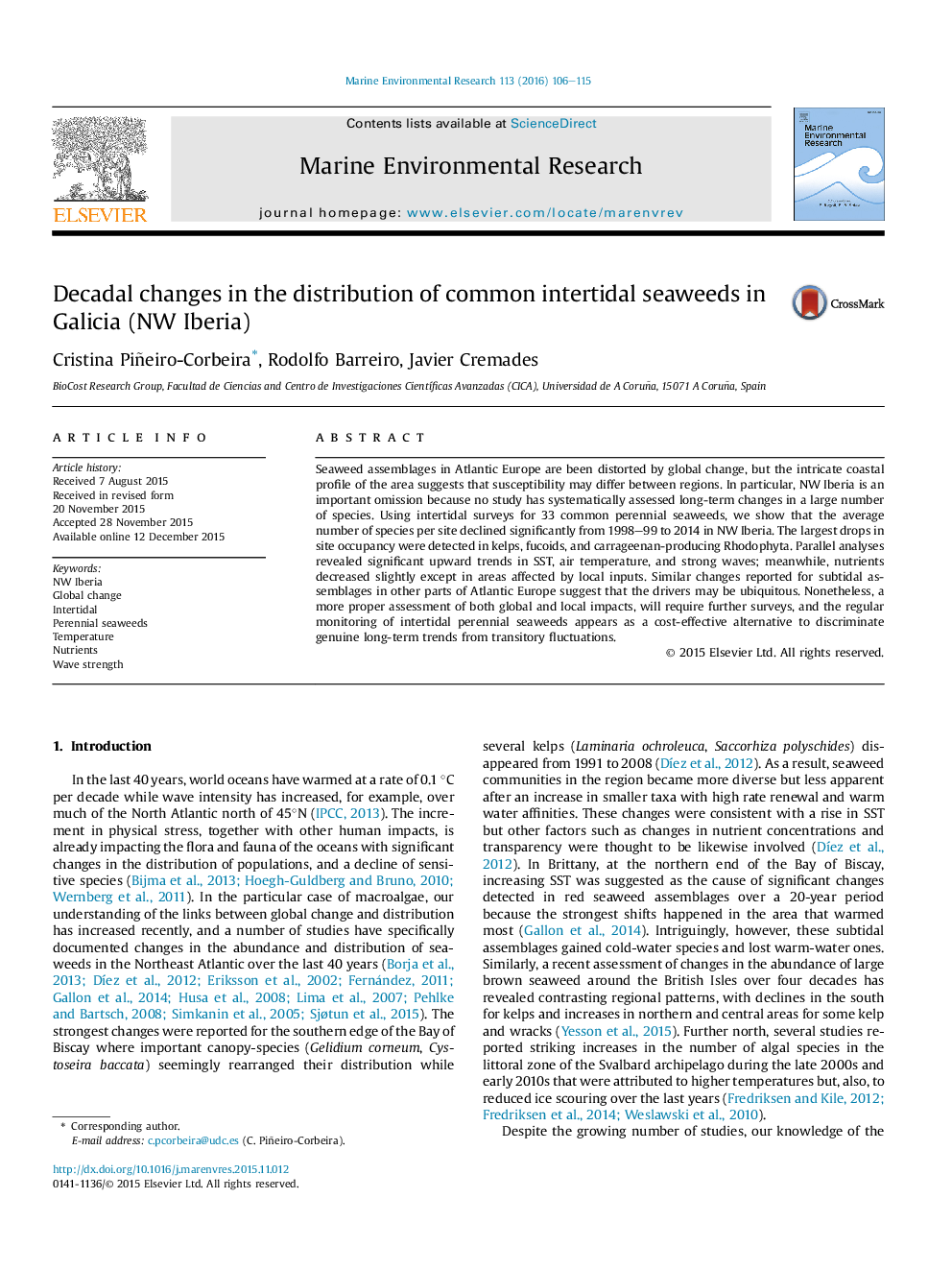| Article ID | Journal | Published Year | Pages | File Type |
|---|---|---|---|---|
| 4550622 | Marine Environmental Research | 2016 | 10 Pages |
•Seaweed assemblages in Atlantic Europe are been distorted by global change.•No study has systematically assessed long-term changes in NW Iberia.•We show the decline of common perennial seaweeds in NW Iberia between 1998 and 2014.•Meanwhile, temperature increased and nutrients declined slightly.•Intertidal perennial algae are an efficient alternative to monitor long-term changes.
Seaweed assemblages in Atlantic Europe are been distorted by global change, but the intricate coastal profile of the area suggests that susceptibility may differ between regions. In particular, NW Iberia is an important omission because no study has systematically assessed long-term changes in a large number of species. Using intertidal surveys for 33 common perennial seaweeds, we show that the average number of species per site declined significantly from 1998–99 to 2014 in NW Iberia. The largest drops in site occupancy were detected in kelps, fucoids, and carrageenan-producing Rhodophyta. Parallel analyses revealed significant upward trends in SST, air temperature, and strong waves; meanwhile, nutrients decreased slightly except in areas affected by local inputs. Similar changes reported for subtidal assemblages in other parts of Atlantic Europe suggest that the drivers may be ubiquitous. Nonetheless, a more proper assessment of both global and local impacts, will require further surveys, and the regular monitoring of intertidal perennial seaweeds appears as a cost-effective alternative to discriminate genuine long-term trends from transitory fluctuations.
